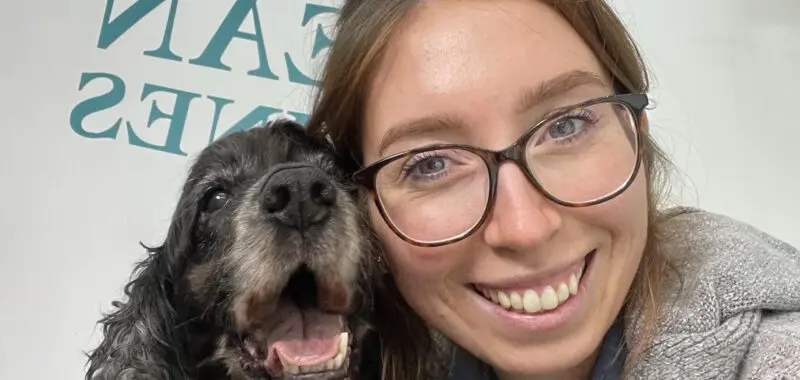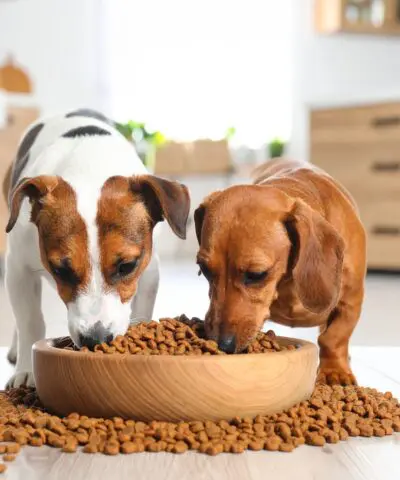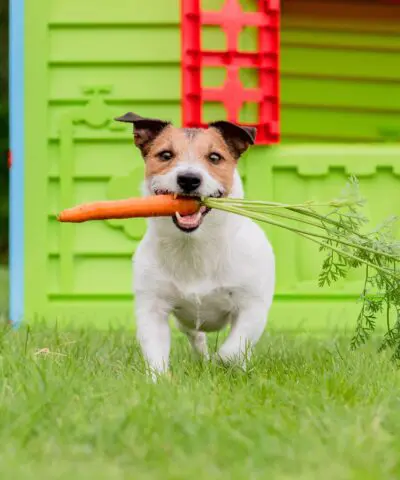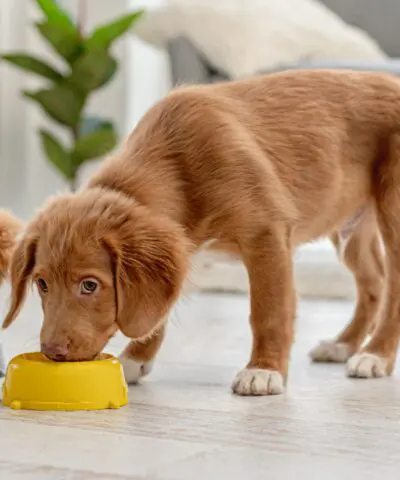February marks Pet Dental Health Month, a reminder that our dogs’ teeth need just as much attention as our own. Dental health for pets can be often overlooked—yet it plays an important role in a dog’s overall well-being. Poor oral hygiene can lead to painful gum disease, tooth loss, and even serious health complications.
We spoke to Hannah Watson, owner of Clean Canines Suffolk. Hannah offers an ultrasonic canine teeth cleaning service alongside dietary advice on the best foods to help soften tartar. In our latest blog, she offers her top tips for helping keep your dog’s teeth and gums in the best condition.
Tell us about your job and what it entails?
I see about 35 dogs (and cats) every week and offer an ultrasonic teeth clean. The process takes on average about 30 minutes with lots of breaks and encouragement in between. It is a completely pain-free and stress-free
treatment. During each appointment, I will find out about their diet, and what products my clients have already tried and delve into their genetics. This enables me to make suggestions as to what products and routines at home would help to keep their teeth and gums as healthy as possible.
In the human world, we’d see a hygienist for a regular clean or check-up. Think of me as your doggy hygienist! All cleans are carried out on the floor, at their level. They’re unrestrained too which keeps the stress levels down.
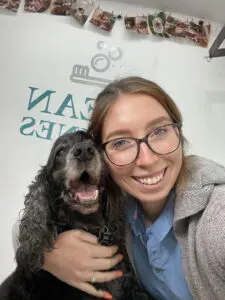
What do you like most about it?
Every appointment is different. I could have a show cat, then a rescue from Romania, then a cockapoo, then a semi-feral cat! Each animal needs a slightly different approach with their clean and aftercare advice.
Also, It is very rewarding when I have a dog or cat who perhaps is very nervous or was a rescue. By the end of their appointment, they’re able to understand that this is a positive environment and they don’t need to be afraid!
How did you get into your job?
Roughly 10 years ago, we had a Yorkshire Terrier (a breed that can be more prone genetically to dental issues) who went into the vet with 42 teeth and came out with just 8 after what we thought would just be a clean. That led to all sorts of more serious health issues. He was unable to chew his food so well for a start! I wanted to focus on helping other pet owners understand how to look after their pet’s teeth and general oral health so that they don’t have the same experience.
I completed a diploma in animal management focusing on nutrition and animal nursing. I also studied animal behaviour. I was always going to work with animals as I had been surrounded by them my whole life.
The funny thing is, I was terrified of the dentist when I was young. Look at me now!
How can owners spot if there is an issue with their dogs’ teeth?
Well, dogs and cats are very stoic. They don’t often show signs of discomfort in their mouths until they reach a point of going off of their food or scratching at the mouth or other health-related issues from infections entering the bloodstream.
If you see any of the above, a vet check is important to ensure that there’s nothing more sinister going on.
I try to encourage people to look out for earlier signs before there is a more serious problem. For example, look out for redness around the gums. Visibly spotting plaque building up on the teeth. Bad breath, worse than the general doggy breath!
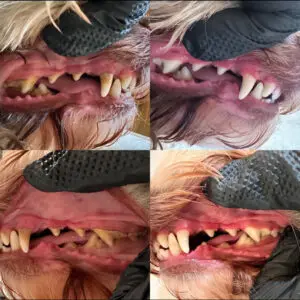
What are your top tips for pet owners?
Checking their teeth regularly from an early age: Have a look at your pets’ mouths from a young age and find out what is normal for them. Getting them used to having the feel of someone looking in their mouths and touching their teeth is important. Their teeth go back further than you may think! Have a look right at the back, not just at the canines and Incisors. Same with ears and paws. The more you do this as part of their routine and build that trust, the easier it will be.
Regular cleaning: We should think of our dogs’ teeth like our own and ideally clean them every day. Some people may not be able to but if they can do this even a couple of times a week, the healthier they will be. I would always look for something like an enzyme paste or enzyme gel to use. Sprays and wipes generally aren’t my typical go-to for keeping their teeth clean. A soft-bristled brush does the job perfectly well!
Ask vets for their view on your dog’s teeth at their annual check-up: At their yearly check-up, your vet should be able to look at their teeth and let you know If there are any concerns.
The right food will make a big difference: Just like human food, try to feed them healthy and natural diets. I try to avoid foods with high carb or sugar levels for my own dogs. The website www.allaboutdogfood.co.uk is a transparent way to check what you’re feeding them!
Treats and kibble can help act as a brush to loosen the plaque before it hardens: Natural air-dried treats can act as a natural brush for bacterial plaque that builds up throughout the day. Think of their teeth like our own!
How can getting the right food help?
It can make a huge difference. I do recommend the Green Pantry dental product as it contains lots of additional natural ingredients that can help such as seaweed which is great as it contains antibacterial properties and helps reduce plaque build-up. Mint also helps to keep their breath smelling fresh!
